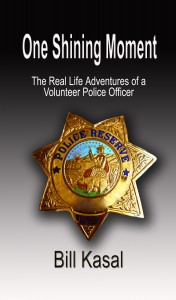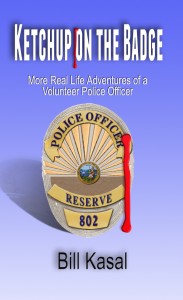I know the location of an actual buried treasure. Well, let’s just say that I can come within approximately ten yards of it. But, because I lost the map, I can’t get to the exact location. It was buried in the last millennium but, once in a while, I think of that treasure.
Buried pirate treasure has long been a delightful myth within our culture. In truth, there was very little actual treasure buried by pirates. Most of the treasure being found in the world was either lost—sometimes accidentally buried, mostly by erosion—or at the bottom of the sea, having been sunk along with the ship on which it had been carried.
 The legend of buried pirate treasure has undoubtedly been fueled by the book, Treasure Island by Robert Louis Stevenson, written in 1883. And Stevenson says in the preface that he got his idea for his book from Wolfert Webber, written by Washington Irving nearly 60 years earlier. The facts are that probably only one pirate, William Kidd, actually buried a treasure.
The legend of buried pirate treasure has undoubtedly been fueled by the book, Treasure Island by Robert Louis Stevenson, written in 1883. And Stevenson says in the preface that he got his idea for his book from Wolfert Webber, written by Washington Irving nearly 60 years earlier. The facts are that probably only one pirate, William Kidd, actually buried a treasure.
Kidd had been given a commission by the British government as a privateer. The story goes that he probably stretched his license into out-and-out piracy and, before he sailed into New York harbor, he buried some of his loot out on Long Island to be used as a bargaining chip against what he figured would probably be a sentence of death.
Apparently, at his trial, he gave instructions as to the location of some of his treasure and it was found. The government used that as proof that he had been a pirate and executed him. But, because there had been some treasure buried and then located, it has long been thought that more treasure is still buried there.
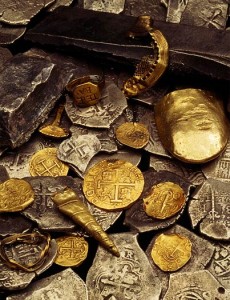 The books by Irving and (mostly) Stevenson, along with a short story by Edgar Allan Poe called The Gold-Bug, were undoubtedly based upon the legend of the buried treasure of William Kidd. And it is these tomes that have created the legend of pirates burying their treasure.
The books by Irving and (mostly) Stevenson, along with a short story by Edgar Allan Poe called The Gold-Bug, were undoubtedly based upon the legend of the buried treasure of William Kidd. And it is these tomes that have created the legend of pirates burying their treasure.
And that book by Stevenson, and the general legend of treasure being buried for safe-keeping, is probably what fueled the burying of this specific treasure. And I had the map to the exact (approximate) location! But, as I said, I lost it. However, I know the city in which it was buried. And I even know the address of the property, but I am not going to publish it here because I don’t want a throng of excited treasure hunters swarming over the property with shovels and pick axes; or, Heaven forbid, bulldozers and skip loaders. I’m sure there wouldn’t be 300,000 people, as in the California Gold Rush of 1849, but even ten percent of that would bring 30,000 people onto this small half-acre on a suburban street. I’m sure the impact on the residents of that area would be a major disruption, both environmentally and economically; not to mention the interference with their daily lives.
Wistful thoughts of that treasure have crossed my mind over the years and I’ve imagined digging for it and unearthing it. But I think an actual hunt for that treasure would be out of the question. I know for a fact that the topography of that area has changed. I have used Google Earth to find the property and, recently, it looks as if there may be some construction going on in the area where I know that treasure to be. I don’t know how often Google updates the satellite images of the planet. The images of my current residence seem to be around six months old. But, from what my limited abilities in satellite imagery can deduce, there may be a structure being built right over the treasure.
As I said, I’ll never go look for the treasure. But the possibility of a building over the site makes it seem, in a way, more final; more lost to the ages.
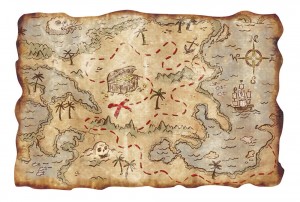 On the slim chance that you haven’t figured out how a doddering old TV producer knows the location of a buried treasure, I buried it myself. And I made the map (that I have since lost). I went to a specific location (which I still recall), paced off several steps in one direction and then a few more in another, and I dug a deep hole and buried the treasure. Then I made a map containing the number of paces and the specific compass directions, and I even included the obligatory X to mark the spot. I kept that map secreted in the back of my top dresser drawer for quite a while. I came across it many times. I remember thinking, back then, that it was useless since I knew right were the treasure was. But the reason for a treasure map—and its safe keeping—is now painfully evident to me since, over the decades, the exact location has grown hazy within my cobweb-draped memory.
On the slim chance that you haven’t figured out how a doddering old TV producer knows the location of a buried treasure, I buried it myself. And I made the map (that I have since lost). I went to a specific location (which I still recall), paced off several steps in one direction and then a few more in another, and I dug a deep hole and buried the treasure. Then I made a map containing the number of paces and the specific compass directions, and I even included the obligatory X to mark the spot. I kept that map secreted in the back of my top dresser drawer for quite a while. I came across it many times. I remember thinking, back then, that it was useless since I knew right were the treasure was. But the reason for a treasure map—and its safe keeping—is now painfully evident to me since, over the decades, the exact location has grown hazy within my cobweb-draped memory.
Our home sat on a hillside. The house was actually built into the hill with the top floor being at ground level in front and the lower floor being at ground level in the back. And in the back, the hillside continued downward a few more feet from the rear entrance. It was into that hillside that I dug a deep, deep hole. At least two feet! I think that at one point, maybe years later, my father had truckloads of dirt dumped onto that hillside to extend a shelf from the back of the house onto which he poured a patio. That was done before I even knew of the plan and I think I realized then that my treasure would be lost to the eons. And now Google Earth is showing me that a structure or extension of that house is possibly being built over the top of it.
I know it is gone and may never be again seen by human eyes; except, perhaps, by Morlocks or Eloi. In my mind I picture my treasure, completely encased in dirt, slowly rusting away through the inevitable march of time and nature. And I am the only human who knows of its existence.
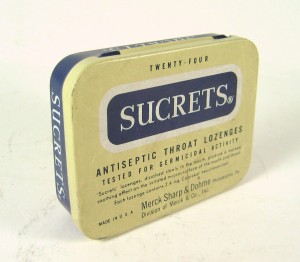 Since I buried it on the side of the hill, it must be about five feet below the surface and, with the addition of extra dirt extending the hillside, my treasure may be sitting at least ten feet from the downward slope of the hill.
Since I buried it on the side of the hill, it must be about five feet below the surface and, with the addition of extra dirt extending the hillside, my treasure may be sitting at least ten feet from the downward slope of the hill.
The exact contents are lost within my memory. But I know that under that soil—and now possibly a room—sits an old Sucrets tin and within it are eight to ten of my best marbles. They have to be beautiful, right? Once in a while as I recall that buried treasure, I wonder which marbles I deemed precious enough to classify them as treasure. I would love to see them today. I would love to visit what my prepubescent mind thought of as treasure; to see what I back then valued.
I have no doubt that they, to this day, sit within that rusting tin, below the ground in the back yard of my childhood home. They have been hidden there for more than half a century. I sometimes wonder how many centuries will pass before, if ever, they are discovered.
 I also wonder how many ideas or ideals I once treasured that no longer have meaning in my life. What are the things I once felt were important that I now consider quaint or even ridiculous. Do one’s values and principles—which, at one time, may have been a basis for a major life decision—slowly rust away? Are there mental constructs that once glittered with certainty that are now, decades later, as corroded and disintegrated as that rusty old tin of marbles? Are they best left buried?
I also wonder how many ideas or ideals I once treasured that no longer have meaning in my life. What are the things I once felt were important that I now consider quaint or even ridiculous. Do one’s values and principles—which, at one time, may have been a basis for a major life decision—slowly rust away? Are there mental constructs that once glittered with certainty that are now, decades later, as corroded and disintegrated as that rusty old tin of marbles? Are they best left buried?
Still, there is sometimes a tickling allure in wondering what it would be like to take a peek back at what I once was… or, at least, what I once thought was important.


